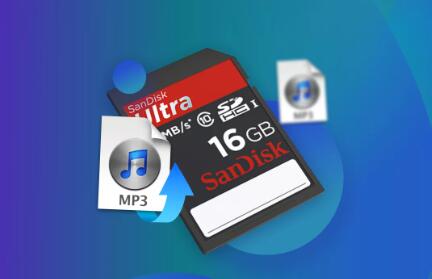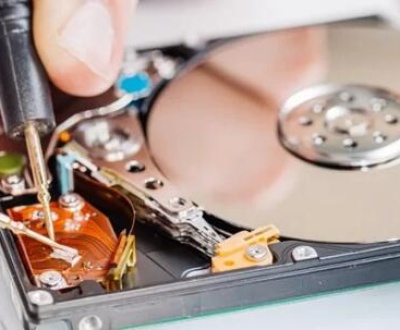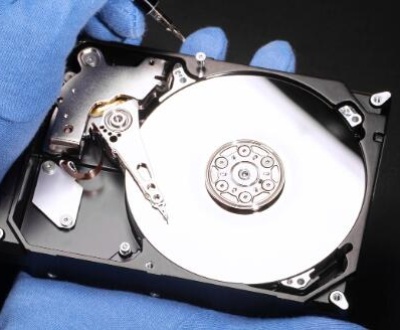Losing files from an SD card can be a frustrating experience, especially when they contain important documents, cherished photos, or vital videos. Fortunately, there are methods to view and potentially recover these deleted files.
File Deletion on SD Cards
How File Deletion Works
When a file is deleted from an SD card, the data isn’t immediately erased. Instead, the operating system marks the space occupied by that file as available for new data. This means that as long as the deleted file hasn’t been overwritten by new data, it may still be recoverable.
Common Causes of File Deletion
There are several reasons files may be deleted from an SD card:
Accidental Deletion: Users often delete files unintentionally while managing their data.
Formatting: Formatting an SD card can remove all files, but recovery may still be possible.
Corruption: Physical damage or logical errors can lead to data loss.
Malware Attacks: Viruses can corrupt or delete files on the card.
Preparing for Recovery
Immediate Actions After Deletion
Stop Using the SD Card: Cease all operations on the SD card immediately after realizing files are missing. New data could overwrite the deleted files.

Create a Backup: If you have another copy of the data elsewhere, make sure to back it up to avoid further loss.
Check for Backups
Before diving into recovery methods, check if you have backups of your SD card data. This could include:
Cloud storage services (e.g., Google Drive, Dropbox)
External hard drives or USB drives
Local backups on your computer
Methods to View Deleted Files on an SD Card
Method 1: Checking the Trash or Recycle Bin
On some systems, deleted files may be moved to the Trash or Recycle Bin instead of being permanently deleted.
For macOS:
Open Trash: Click on the Trash icon in the Dock.
Search for Files: Browse through the contents or use the search feature to find specific files.
Restore Files: If you locate the deleted files, right-click and select “Put Back” to restore them.
For Windows:
Open Recycle Bin: Double-click the Recycle Bin icon on your desktop.
Look for Deleted Files: Search through the list of deleted items.
Restore: Right-click on any found files and choose “Restore” to return them to their original location.
Method 2: Using File Recovery Software
If the files are not in the Trash, data recovery software can help you view and recover deleted files from your SD card. Here’s how to use some popular tools:
1. Panda Assistant
Advantages of Panda Assistant
1Cost-Effective Solution
Panda Assistant offers a free trial version, allowing users to assess its effectiveness before committing to a purchase. The full version is competitively priced compared to other data recovery solutions, providing great value for the features offered.
Excellent Customer Support
Panda Assistant provides comprehensive customer support through various channels, including email, live chat, and an extensive knowledge base. This ensures users receive assistance whenever they encounter issues or have questions.
Regular Updates
The software receives regular updates to enhance performance and add new features. These updates ensure that Panda Assistant remains compatible with the latest operating systems and file systems.
Positive User Reviews
Panda Assistant has garnered numerous positive reviews from users who have successfully recovered lost files. The software’s effectiveness and ease of use have made it a favorite among data recovery solutions.
2. Recuva
Recuva is another popular recovery software that provides a user-friendly experience.
Download Recuva: Visit the Recuva website and download the software.
Install and Open: Complete the installation process and launch Recuva.
Select the SD Card: Choose your SD card for scanning.
Scan for Deleted Files: Click “Scan” to search for deleted files.
Preview and Recover: After the scan, you can view recoverable files. Select the files you want to restore and click “Recover.”
3. EaseUS Data Recovery Wizard
EaseUS offers a free version that can recover up to 2GB of data, making it a great option for users needing to recover small amounts of data.
Download EaseUS: Visit the EaseUS website to download the software.
Install and Launch: Install the program and open it.
Select the SD Card: Choose your SD card from the list of available drives.
Scan for Lost Files: Click “Scan” to begin searching for deleted files.
Review and Recover: Once the scan is complete, select the files you want to recover and click “Recover.”
Method 3: Use Built-in Features of macOS and Windows
Both operating systems offer built-in features that can help you recover deleted files.
For macOS:
Use Finder: Open Finder and navigate to your SD card.
Search for Files: Use the search bar in the top right corner to find specific file names or extensions.
Time Machine: If you regularly use Time Machine for backups, you can restore files from a previous backup by entering Time Machine and navigating to the date before the deletion.
For Windows:
File History: If File History is enabled, right-click on the SD card in File Explorer, select “Restore previous versions,” and choose a version from before the deletion.
Search Function: Use the search bar in File Explorer to find specific files by name or extension.
Method 4: Checking for Hidden Files
Sometimes, files may not be deleted but hidden. Here’s how to view hidden files on your SD card:
For macOS:
Open Terminal: Go to Applications > Utilities > Terminal.
Show Hidden Files: Enter the command defaults write com.apple.finder AppleShowAllFiles YES and press Enter.
Restart Finder: Type killall Finder to refresh Finder. Hidden files should now be visible.
For Windows:
Open File Explorer: Click the View tab at the top of the window.
Show Hidden Items: Check the box next to “Hidden items” to reveal any hidden files.
Method 5: Manual Inspection
If you suspect that files might still be on the SD card but are misplaced, you can manually inspect the card.
Open Folders: Navigate through different folders on your SD card.
Sort Files: Sort files by date to see if any recent changes have occurred.
Check Different Devices: If the SD card has been used in multiple devices, check those devices to see if files were transferred or deleted.
Method 6: Professional Data Recovery Services
If none of the above methods work and the data is crucial, consider professional data recovery services. These services can be expensive, but they often use specialized tools and techniques to recover data from damaged or corrupted SD cards.
Best Practices for Data Recovery
Act Quickly
The sooner you attempt recovery after deletion, the better your chances of success. Delaying recovery can lead to overwriting, making it impossible to recover lost files.
Avoid Overwriting
Do not save new files to the SD card until you’ve attempted recovery. Any new data written to the card can overwrite the deleted files.
Regular Backups
To prevent future data loss, regularly back up your files. Use cloud storage services, external hard drives, or local backups on your computer to keep copies of important data.
Use Read-Only Mode
If possible, set your SD card to read-only mode to prevent accidental overwriting while you attempt recovery.
About us and this blog
Panda Assistant is built on the latest data recovery algorithms, ensuring that no file is too damaged, too lost, or too corrupted to be recovered.
Request a free quote
We believe that data recovery shouldn’t be a daunting task. That’s why we’ve designed Panda Assistant to be as easy to use as it is powerful. With a few clicks, you can initiate a scan, preview recoverable files, and restore your data all within a matter of minutes.
Subscribe to our newsletter!
More from our blog
See all postsRecent Posts
- Data recovery salt lake city utah 2025-04-18
- Data recovery sacramento 2025-04-18
- Data recovery miami 2025-04-18

 Try lt Free
Try lt Free Recovery success rate of up to
Recovery success rate of up to









